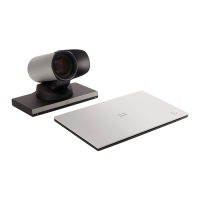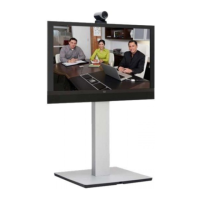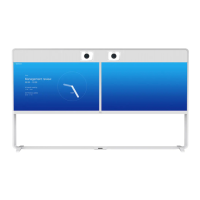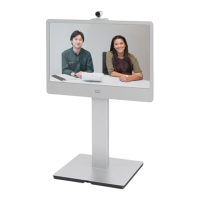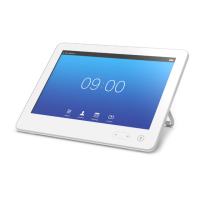D14637.10 Profile C20 and Quick Set C20 Administrator Guide TC6.1, APRIL 2013. www.cisco.com — Copyright © 2010-2013 Cisco Systems, Inc. All rights reserved.
56
Cisco TelePresence System Quick Set C20 and Profiles using C20 Administrator Guide
Conference [1..1] DoNotDisturb DefaultTimeout
This setting determines the default duration of a Do Not Disturb session, i.e. the period when
incoming calls are rejected and registered as missed calls. The session can be terminated
earlier by using the user interface (remote control or Touch controller) or the Conference
DoNotDisturb Mode setting. The default value is 60 minutes.
Requires user role: ADMIN
Value space: <0..1440>
Range: Select the number of minutes (between 0 and 1440, i.e. 24 hours) before the Do Not
Disturb session times out automatically.
Example:
Conference 1 DoNotDisturb DefaultTimeOut: 60
Conference [1..1] FarEndControl Mode
Lets you decide if the remote side (far end) should be allowed to select your video sources and
control your local camera (pan, tilt, zoom).
Requires user role: ADMIN
Value space: <Off/On>
Off: The far end is not allowed to select your video sources or to control your local camera
(pan, tilt, zoom).
On: Allows the far end to be able to select your video sources and control your local camera
(pan, tilt, zoom). You will still be able to control your camera and select your video sources
as normal.
Example:
Conference 1 FarEndControl Mode: On
Conference [1..1] FarEndControl SignalCapability
Set the far end control (H.224) signal capability mode.
Requires user role: ADMIN
Value space: <Off/On>
Off: Disable the far end control signal capability.
On: Enable the far end control signal capability.
Example:
Conference 1 FarEndControl SignalCapability: On
Conference [1..1] Encryption Mode
Set the conference encryption mode. A padlock with the text "Encryption On" or "Encryption
Off" displays on screen for a few seconds when the conference starts.
Requires user role: ADMIN
Value space: <Off/On/BestEffort>
Off: The system will not use encryption.
On: The system will only allow calls that are encrypted.
BestEffort: The system will use encryption whenever possible.
> In Point to point calls: If the far end system supports encryption (AES-128), the call will be
encrypted. If not, the call will proceed without encryption.
> In MultiSite calls: In order to have encrypted MultiSite conferences, all sites must support
encryption. If not, the conference will be unencrypted.
Example:
Conference 1 Encryption Mode: BestEffort
Conference [1..1] DefaultCall Protocol
Set the Default Call Protocol to be used when placing calls from the system.
Requires user role: ADMIN
Value space: <H323/Sip/H320>
H323: H323 ensures that calls are set up as H.323 calls.
Sip: Sip ensures that calls are set up as SIP calls.
H320: H320 ensures that calls are set up as H.320 calls (only applicable if connected to a
Cisco TelePresence ISDN Link gateway).
Example:
Conference 1 DefaultCall Protocol: H323
Conference [1..1] DefaultCall Rate
Set the Default Call Rate to be used when placing calls from the system.
Requires user role: ADMIN
Value space: <64..6000>
Range: Select a value between 64 and 6000 kbps.
Example:
Conference 1 DefaultCall Rate: 768
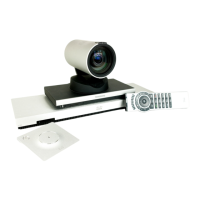
